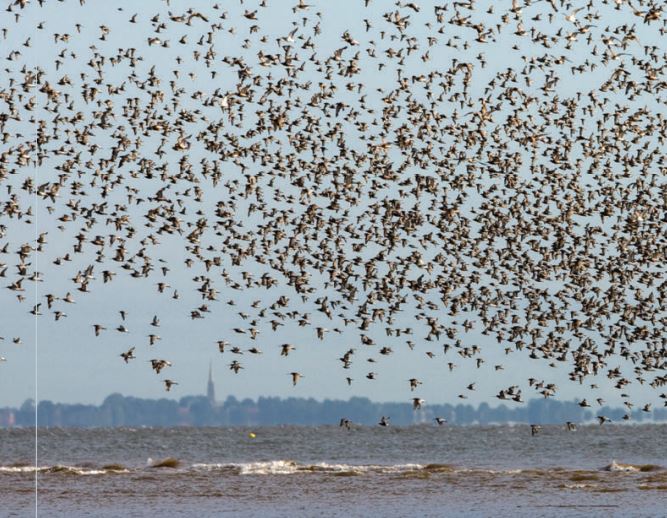The Humber Estuary is internationally important for wildlife, and it houses the UK‘s largest port complex: seldom a good combination. It is designated as a Special Area of Conservation (SAC) and a Special Protection Area (SPA) under the Habitats Regulations. It is also internationally important wetland under the Ramsar Convention. These designations form a European Marine Site (EMS).
The Humber Nature Partnership is one of 48 Local Nature Partnerships around England. The establishment of Local Nature Partnerships has come about as a result of commitments made by Government in the Natural Environment White Paper 2011. The Humber Nature Partnership works with its members and others to deliver the sustainable management of the Humber Estuary European Marine Site.
In June of 2017, the Humber Nature Partnership announce the launch of “Investing in Natural Capital: Creating the right environment for economic investment”. This document which sets out Humber Nature Partnership’s view of the importance of natural capital around the Humber and identifies opportunities for investing in it. It calls for:
- Sustainable economic growth
- Social well-being and community cohesion
- Well-managed natural capital
Humber Nature Partnership’s Manager, Darren Clarke said, “We need to work together to develop the Humber into a landscape where properly integrated, multi-purpose planning provides the best environmental setting and the right skills and services to attract high quality investment. We need to invest directly in our natural capital to maximise the value of these often overlooked resources for the economic prosperity of the region so that everyone benefits.”
For instance, the Humber estuary’s Ancholme Valley has the potential for large-scale wetland restoration, which would reduce flood risk while boosting eco-tourism.
The waters of the Humber Estuary create a dynamic landscape. Its attraction lies in a constantly changing appearance and mood due to the tide, changing coastal weather and human activity. The hinterlands of the estuary have a rich cultural heritage and a sense of remoteness and peace close to major urban areas that have grown around the Estuary.
Wildlife of international importance, nature reserves, country parks and major visitor attractions are significant destinations and sites of particular interest for visitors. The estuary is a unifying presence: a special resource for access and enjoyment and has a significant potential value to the area, to the wellbeing and health of the people who live in and around the estuary, for recreation and critically as the bedrock of the local economy based on its ports, industry, agriculture and settlements.
The flat lands of much of the estuary hinterland are perfect for development, however, as with many other low lying areas of the country, they are prone to flooding. Events such as those of the 5th December 2013 have shown that we simply can’t afford to build our way out of the predicament. Capital investment and maintenance costs make the prospect of an impregnable flood barrier for the whole estuary uneconomic. Working with the environment can alleviate some of these costs.
For example, by taking advantage of the coastal habitats which reduce wave energy allowing smaller, cheaper defences. We have to tackle climate change and working with the environment will help us to achieve this at least cost. The Humber ports, together some of the most important trading infrastructure in the UK were not located here by luck. They are taking advantage of the unique topographical environment of the estuary. The estuary’s shape offers calm waters and safe haven. Spurn peninsula protects the estuary from the worst of the North Sea storms. It ensures the deep water channel, so vital to the ports, is maintained only by moderate dredging. We shouldn’t take these assets for granted.
Whilst jobs and prosperity are a priority, a happy, healthy work force is also a huge investment draw. Access to green space, to fresh air and to wild places is proven to lift the spirits and offer great opportunities for exercise and recreation. A first class environment will help to attract and hold on to first class entrepreneurs, improve property values and attract a healthy and willing work force.
The internationally important habitats and the hundreds of thousands of birds and other wild creatures that depend on them are an economic asset in their own right. Nature tourism is one of the fastest growing sectors in the UK. Locally, it is worth about £9 million a year, benefiting some of the hardest to reach sections of our communities, but this income could readily be doubled with the right investment.
This document illustrates why investment in natural capital is a critical part of any attempt to improve the prosperity and quality of life of the Humber’s communities and also to meet the challenges of climate change. It sets out a series of themes where natural capital currently supports the Humber’s economy and highlights opportunities where natural capital can be enhanced to ensure the future economic potential of the Humber.

